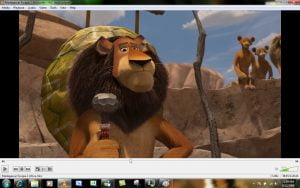Who, who uses one computer, doesn’t know about VLC Media Player? Perhaps, being one of the most versatile media players in the history of the software industry, VLC establishes itself as the most downloaded media playback software on windows and Android ecosystem.

But, how was it formed? Is there any story that we can really dig in to breathe the substance of inspiration and awe? Let’s find out:
The story of VLC and VideoLan (its parent manufacturer/ developer) dates back to the early 90s. VLC wasn’t a pre-established or planned venture by some corporate giant. Rather, it is said to happen quite spontaneously out of the limitations of other media players of that time.
It was originally developed as one of two programs for media streaming, VideoLAN Client (VLC) and VideoLAN Server (VLS), but most of the features of VLS have been incorporated into VLC, with the result renamed VLC media player. What is more intriguing is that VideoLAN project actually began as a student endeavour of Jean Baptiste from École Centrale Paris (France).
Yes, it was a college project which was designed to outdo almost all other media software including the Windows Media Player. VLC had a great codec support and was able to play almost every other media player anyone could throw at it.
Initially, the after releasing the software under the free software/open source GNU General Public License, the project is now a multinational media success with a development team spanning 40 nations worldwide.
The player initially offered just media playback but today, it offers a plethora of options like video debugging, video as wallpaper, video capturing, streaming, additional volume settings, screenshot mirroring etc. and even more than the competition is even yet to offer.
VLC stands for VideoLAN Client when VLC was a patron of the VideoLAN project. But since VLC is no longer merely a client, that initialism no longer fits.
The icon of VLC is famous for it own reasons and has made the company quite capturing in terms of brand logos. The cone icon used in VLC is a reference to the traffic cones collected by École Centrale’s Networking Students’ Association. The cone icon design later was changed from a hand drawn low-resolution icon to a higher resolution CGI-rendered version in 2006, illustrated by Richard Øiestad.
So, getting back to the main context, VLC got its first release hit in 1994 and then it went on to expand. With its success, it gave a hard time to the run of WMP and GOM Player. Its extended feature set and intense codec support resulted in beating the heat and Jean always focused on escalating the same by regular updates and developer support.
Since the software was open source, it opened possibilities of many other new entrants like KM Player (Windows/ Mac) and MX Player (Android) to enhance to get the infrastructure it was held onto. However, the fact that it was free and could run any video files resulted in a debate of whether it could promote media piracy.

Jean once commented:
We are no one to advocate anything original or pirated. The software us a third party stuff and it is upon the users that how they use it.
Today, despite every good or bad time, the VideoLAN team has seen, VLC establishes itself as one of the key players in the industry and holds the same versatility as a media player, that it used when it was founded.
From this story, all we can conclude is that an entrepreneurial innovation needs not to be grand or extensively ‘Apple-like’. All it needs is to address one prevalent problem and solve it thereby. One right-click on solving problems of others can form wonders as big as the VLC Media Players.









